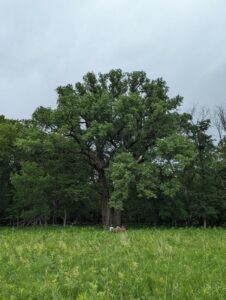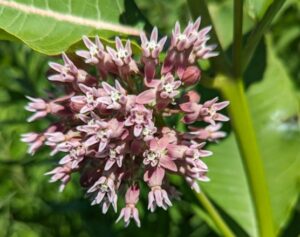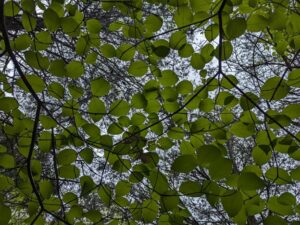Strongly Sculptural

By Anna Kerr, Ozark Field Crew Leader/ AmeriCorps Member

I was planning on writing about cottonwood trees this week, but I came across a phrase that struck me in my research. “Strongly sculptural” was a phrase used in the first listed site on google. I was looking for a place to start and it looks like I got more than what I asked for, I got a window to dive through when looking at nature. From the discussions I have had about nature, most people think that nature exists in a sort of chaotic state. While that might be true in some aspects; the random weeds growing on the side of the road, or that one flower that decides to be a slightly different shade than the rest in the garden, I think it it easy to see the organization and intentional structure of the trees and the bees, the flowers and the leaves.
The trees, well they’re very obviously structured, the branches of a giant cottonwood stretch out in every direction but only reach as far as the water in the soil can compete with gravity. If you blur the lines, the shape of the tree all at once becomes very uniform, but still unique from tree to tree. These trees grow rapidly but not so fast that they cannot support themselves. They know to grow along ponds and waterways, or in dried out creeks that will fill up with rain.

The bees, while it may seem that they buzz aimlessly to and fro, they are among the most efficient creatures in the world. Once they find the most efficient path between plants and their hive, bumblebees will stick to it. It takes a large computer to calculate such an efficient path but believe it or not, bumblebees don’t have access to these computers let alone know how to use them. Somehow they have been naturally hardwired in their tiny brains to recognize a pattern that requires the least amount of effort and repeat it endlessly.

The flowers, though some may be missing petals, or not fully developed, are some of the most sculptural organisms I can imagine. Each flower has evolved to attract and support a different kind of pollinator, and some do this in miraculous ways. Common milkweed flowers grow in nearly spherical clusters while the plants are connected by rhizomes underground that allow them to grow in colonies and increase the likelihood of pollination. These spherical clusters, called umbels, are a bunch of tiny flowers less than a centimeter wide and are pollinated by hundreds of different kinds of insects.

Lastly, the leaves; every leaf I have encountered has so much detail and is so meticulously sculpted and structured. Though they all look different from plant to plant, each leaf grows intentionally to be best suited to the habitat it grows in. All in all, plants and animals, though seemingly random, create their own strong sculptural aspects to induce order and function.
Sources
Nebraska Forest Service: Cottonwood, Eastern
Understanding the flight of the bumblebee